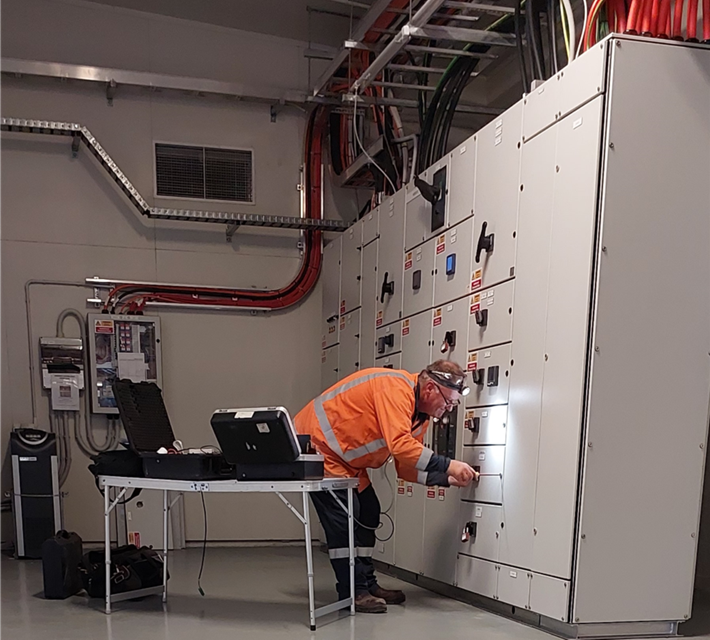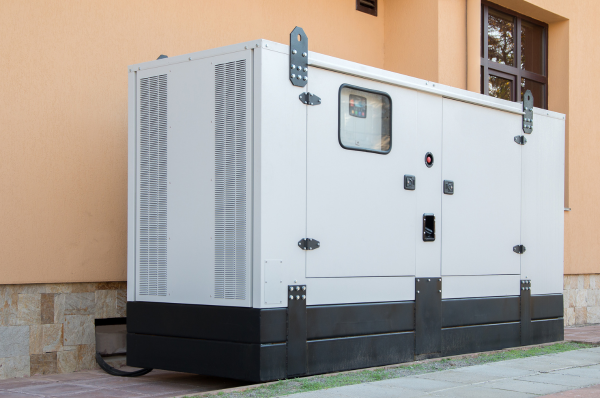December 2023 Newsletter Riddle
If Santa’s five elves take five minutes to make five dolls, how long would it take 100 elves to make 100 dolls?
Answer: 5 minutes
Halloween Riddles
Q: How do you fix a broken Jack-o-lantern?
A: With a pumpkin patch
Q: Why didn’t have the mummy have any friends?
A: He was too wrapped up in himself.
Q: What do you get if you cross a snowman with a witch?
A: A cold spell.
Circuit Breakers and the Importance of Testing
Circuit breakers are automatically operated electrical switches designed to protect an electrical circuit from damage caused by excess current from an overload or short circuit.
The basic function of a circuit breaker is to interrupt the current flow when a fault is detected. Unlike a fuse, which operates once and then must be replaced, a circuit breaker can be reset (either manually or automatically) to resume normal operation.
Circuit Breakers play a critical role in protecting expensive equipment in your plant. However, they can go long periods without activation, so it is essential that they are regularly maintained and tested. If they fail to activate when needed it could have catastrophic consequences for your staff and plant if an arc flash were to occur and would result in extensive damage to your plant’s electrical systems.
Primary & Secondary injection testing of your circuit breakers should be included as part of your Preventative Maintenance plan to ensure their reliability and safety.
Primary Injection Testing vs Secondary Injection Testing
Primary Injection Testing injects a multiple of the fault rated current of the breaker through the breaker to measure the trip time.
Secondary Injection Testing injects a ratio of the fault rated current directly into the trip unit and measures how long the breaker takes to trip.
The primary tests of the breaker are closer to a real-world scenario while secondary tests the timing and functioning of the trip unit.
Primary injection testing is usually the preferred test method as it tests the entire circuit including the current sensors, wiring and the current conduction path in the circuit breaker as part of the test. However, it is also more expensive, so is generally conducted at commissioning and on circuit breakers that are part of a critical process or engineered safety system. Other than trip testing other tests that can be conducted as part of your primary injection testing include:
– Power Transformers (Through Faults)
– Relay Testing
– Bus-work, Switchgear and HV Breakers
– Low voltage breakers
– Switchgear Testing
– Heat runs
– Stability tests
– Loose Connections
– Core Identification
If you need help incorporating primary and secondary injection testing as part of your preventative maintenance programme get in touch with the EAS team today on 07 834 0505 or [email protected].

Riddle – October 2023 Newsletter

Answer: Trouble
Riddle – September 2023 Newsletter

Answer: A hole
Improving efficiency and safety with Programmable Logic Controllers (PLCs)
Programmable Logic Controllers (PLCs) are used by businesses around the world to automate their manufacturing processes to ensure accuracy, consistency and improved efficiency and safety.
PLCs were originally developed in the late 1960s by the US automotive industry to replace relay logic systems. These systems were difficult to update or alter the automation process due to being hard-wired. Any changes to the automation process, using relay logic, meant rewiring and updating documentation. Even a single misplaced wire or failed relay could render the the whole system faulty, making troubleshooting a time-consuming process.
In comparison, PLCs use a tiny computer that takes inputs from data capture points and human input points such as switches and buttons. Based on its programming, the PLC then decides whether or not to change the output. PLC outputs can control a wide range of equipment including motors, solenoid valves, lights, switchgear, safety shut offs and many more.

Advantages of PLCs
- Control & Automation
PLCs allow the automation of complex tasks such as managing production lines, regulating temperature and pressure, coordinating machinery, and controlling robotic systems.
PLCs provide precise and reliable control over your processes by monitoring various sensors and input signals and making logical decisions based on predefined programming.
- Flexibility & Adaptability
PLCs are easy to programme or reprogramme to accommodate changes in production requirements or process parameters. They allow for the integration of new devices or components without requiring extensive rewiring or hardware changes.
- Reliability & Fault Tolerance
PLCs offer support features such as backup power supplies, self-diagnostic capabilities and error handling techniques that help identify faults and minimise your downtime.
- Safety & Protection:
PLCs play a crucial role in ensuring the safety of personnel, equipment and processes. They can implement safety protocols, monitor critical parameters and trigger emergency shutdowns or alarms in the event of hazardous conditions.
- Data collection and analysis:
PLCs can gather and process real-time data from various sensors and devices within the control system. The data collected via PLCS can also work with other data collection systems to improve data analysis, reporting and optimisation.
The EAS team have extensive experience working on projects utilising PLCs. If you’re looking for assistance with installing or upgrading your processes with PLCs, get in touch with the EAS team today on 07 834 0505.
Riddle Answer – August 2023
A puzzle piece
KEEPING YOUR GENERATOR IN TOP NOTCH CONDITION
In the event of a power outage, a generator is essential to keeping your your facility running. However, to ensure you have a truly reliable backup power system your generator must be regularly maintained so it is ready to operate when you need it.
By implementing an electrical preventative maintenance plan for your generator, you ensure:
- Reliability and Availability:
Regular maintenance can prevent unexpected breakdowns and minimise downtime. - Efficiency and Performance:
Regular electrical maintenance ensures the generator will operate at optimum efficiency. - Cost Savings:
Regular maintenance helps prevent major electrical failures that can be expensive to repair. Additionally, well-maintained generators tend to have a longer lifespan, reducing the need for premature replacements. - Safety:
Generators involve high-voltage electrical systems, and faulty or neglected electrical components can pose significant safety hazards.
Electrical Preventative Maintenance Checks for your generator:
Your generator electrical preventative maintenance plan should include:
- Visual Inspections:
- Inspections of all electrical components, including cables, connectors, and terminals, for signs of damage, corrosion, or overheating.
- Checking for loose connections and tightening them if necessary.
- Verifying all electrical enclosures and panels are clean, properly sealed, and free from debris.
- Voltage and Frequency checks:
Regularly measuring the output voltage and frequency of the generator to ensure they are within the specified range. - Circuit Breaker and Protective Device testing:
- Inspections and testing of all circuit breakers, relays, fuses, and other protective devices.
- Checking for any signs of overheating or damage, such as tripped breakers or blown fuses.
- Exercising circuit breakers to prevent them from becoming stuck or corroded.
- Grounding System checks:
- Inspecting the grounding system, including ground rods, grounding conductors, and connections, for integrity and proper bonding.
- Testing the resistance of the grounding system to ensure it meets the required standards.
- Battery System inspections:
- Including checking battery terminals and cleaning them.
- Testing battery voltage and conducting load tests to assess battery health.
- Control Panel and Wiring checks:
- Checking the control panel for any loose connections, damaged wiring, or faulty components.
- Ensuring all control panel switches, indicators, and meters are functioning correctly.
- Inspecting all wiring insulation for wear and tear and repairing or replacing, as necessary.
- Transfer Switch testing:
- Testing the automatic transfer switch (ATS) to ensure it can safely and reliably transfer the load between the utility power and the generator.
- Load Testing:
- Periodic load bank testing assesses the generator’s performance under various loads. This will help identify any issues with voltage regulation, transient response, or frequency control.
- Infrared Thermography:
- Thermal imaging can identify hotspots in electrical connections and components which can indicate loose connections, overloaded circuits, or other electrical problems.
By prioritising electrical preventative maintenance for your generators, you can minimise the risk of unexpected failures, ensuring the safety of your team and equipment and achieve long-term cost savings with optimised performance.
If you would like to get an electrical preventative maintenance plan in place for your generator to give you peace of mind that you’ll have power when you need it; get in touch with the EAS team today on 07 834 0505.


